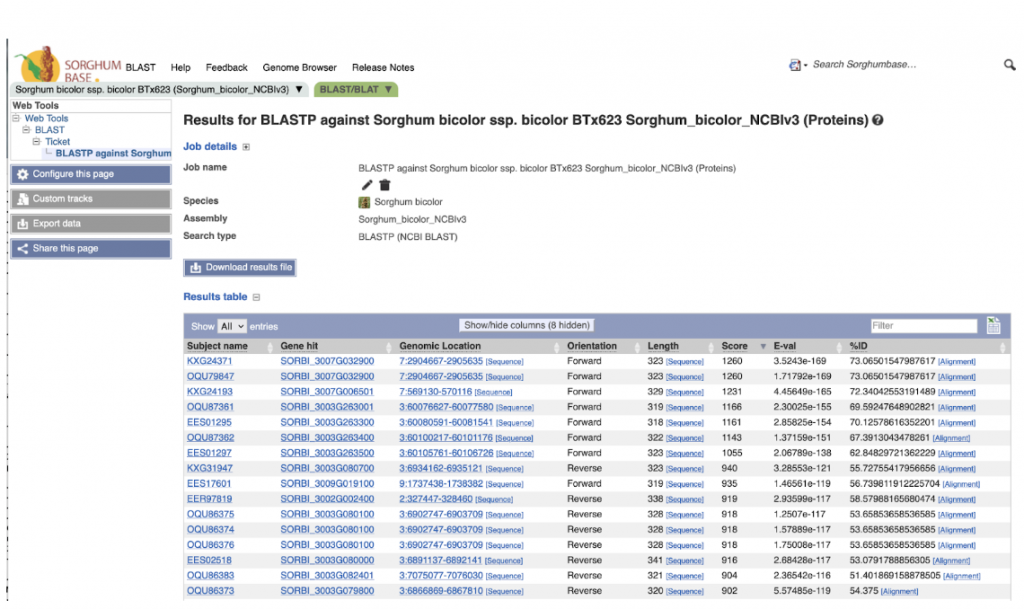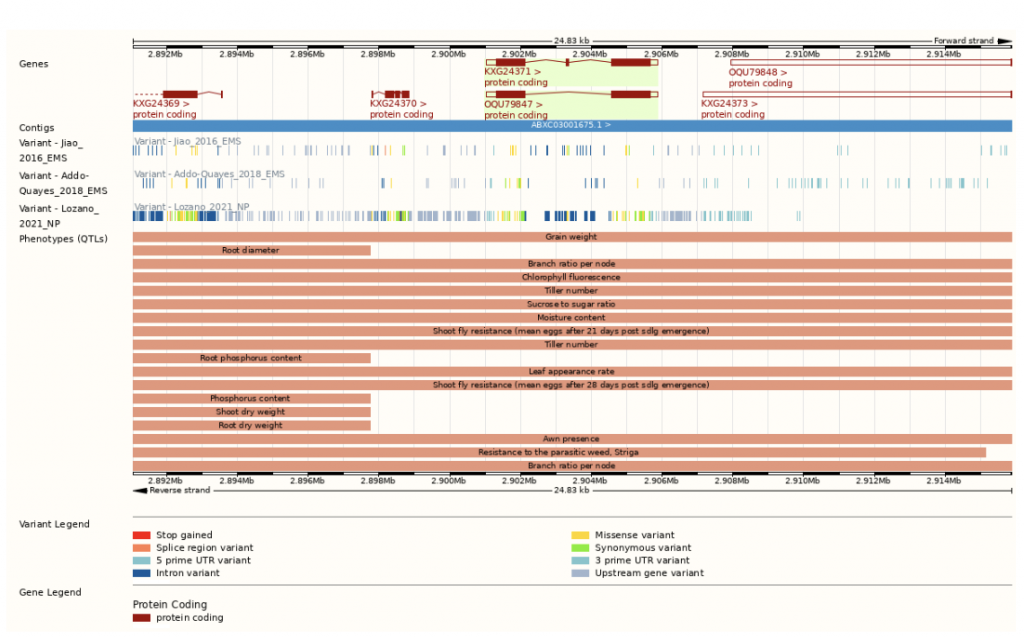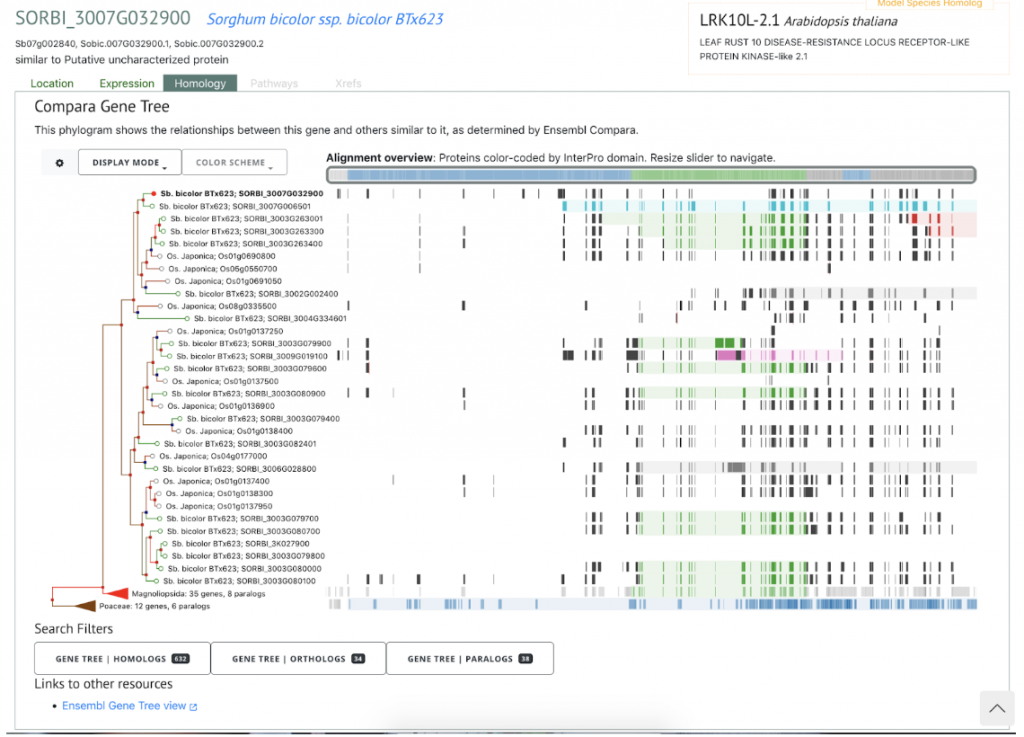Phosphorus Efficiency in Sorghum Hybrids Shows Potential for Increasing Production in Nutrient-Difficient Soils
Sorghum, a cereal specifically adapted to adverse conditions like poor soil fertility and drought, is a significant source of food for half a billion people. One of the most important factors limiting sorghum production, especially in tropical weathered soils, is low-phosphorus availability in the soil. Determining a way to produce sorghum that can make use of limited quantities of phosphorus and thrive is of great interest to scientists and breeders.
In an effort to identify and genetically assess sorghum hybrids that use phosphorus efficiently, Silva and colleagues at the Embrapa Milho e Sorgo and the Universidade Federal de Viçosa in Brazil studied 38 sorghum hybrids and two inbred lines grown hydroponically under high and low phosphorus conditions. The biomass and root traits of the plants were measured in both conditions. Since phosphorus absorption occurs by diffusion, root proximity to the phosphorus is important and the morphology and architecture of the roots are of paramount importance. Tolerance to phosphorus starvation is associated with root diameter, root surface area and enhanced P uptake under low-phosphorus conditions. A shallower root system, greater generation of adventitious roots and root elongation were associated with more efficient absorption of phosphorus (Lynch, 2021). The present study showed phenotypic differences in the hybrid genotypes related to the phosphorus conditions in their growing environment. For most genotypes the means of the measured traits were lower under low-phosphorus conditions than under high-phosphorus conditions. Many of the plants with a phosphorus-efficient genotype had roots which were mainly fine, increasing the surface area of the roots for absorption and the root length to weight ratio. The researchers concluded that the hybrid lines AG1090, MSK326, AG1060, 1G100, AS 4639, DKB 540, and DKB 590 performed the best under low-phosphorus conditions. These hybrid sorghum lines showed the most promise for adapting to low-phosphorus availability and had the highest values of root length, total root surface area, and surface area of roots with diameter between 0 and 1mm.
“Sorghum performance on tropical soils is the result of adaptation to multiple stress conditions, including phosphorus (P) deficiency. Root plays a pivotal role in P absorption and the early-stage phenotyping is fundamental to accelerate plant breeding. The characterization of hybrids showed phenotypic diversity for biomass and root traits related to P acquisition that can be useful for establishing selection strategies for sorghum breeding programs and increasing P use efficiency.” – Sousa
SorghumBase examples:
PHOSPHORUS-STARVATION TOLERANCE1 (SbPSTOL1) alleles are associated with root diameter, root surface area and enhanced P uptake under low-P (Hufnagel et al., 2014).
To identify SbPSTOL1, Hufnagel et al (2014) identified six likely PSTOL1 homologs in sorghum through a sequence similarity search using the amino acid sequence of rice PSTOL1. The sorghum homolog with the closest sequence similarity to rice OsPSTOL1 was Sb07g002840 (SORBI_3007G032900).



References
Hufnagel B, de Sousa SM, Assis L, Guimaraes CT, Leiser W, Azevedo GC, Negri B, Larson BG, Shaff JE, Pastina MM, Barros BA, Weltzien E, Rattunde HF, Viana JH, Clark RT, Falcão A, Gazaffi R, Garcia AA, Schaffert RE, Kochian LV, Magalhaes JV. Duplicate and conquer: multiple homologs of PHOSPHORUS-STARVATION TOLERANCE1 enhance phosphorus acquisition and sorghum performance on low-phosphorus soils. Plant Physiol. 2014 Oct;166(2):659-77. PMID: 25189534. DOI: 10.1104/pp.114.243949.
Lynch JP. Root phenes for enhanced soil exploration and phosphorus acquisition: tools for future crops. Plant Physiol. 2011 Jul;156(3):1041-9. PMID: 21610180. DOI: 10.1104/pp.111.175414.
Silva KJ, Santos CV, Menezes CB, de Sousa SM. Sorghum hybrids grown in hydroponics contrast for phosphorus use efficiency. Braz J Biol. 2022 Feb 2(84):e253083. PMID: 35137838. DOI: 10.1590/1519-6984.253083. Read More
Related Project Websites:
Embrapa: https://www.embrapa.br/en/milho-e-sorgo


